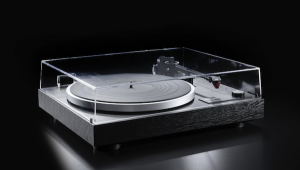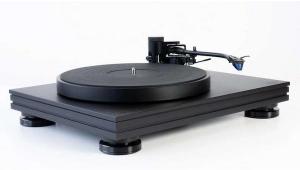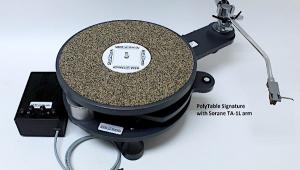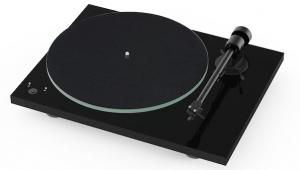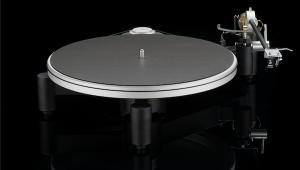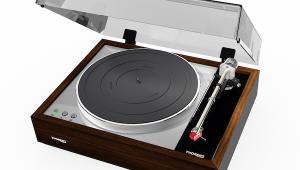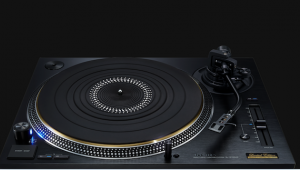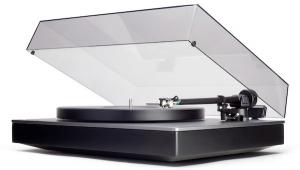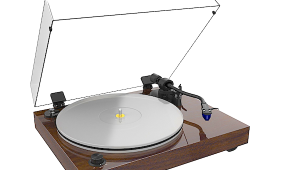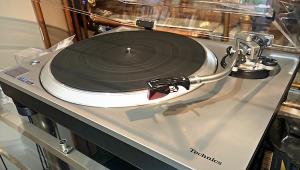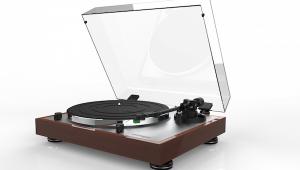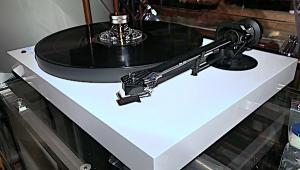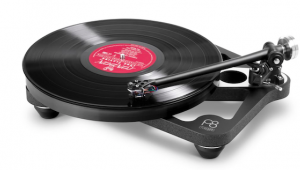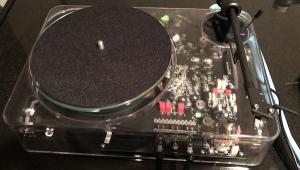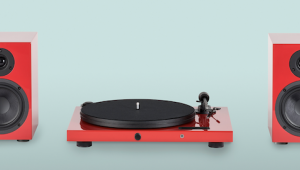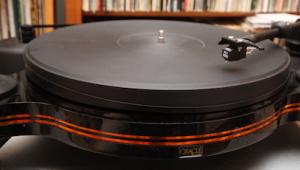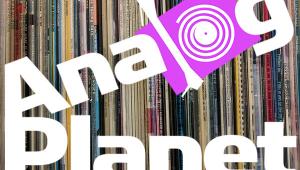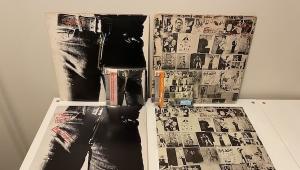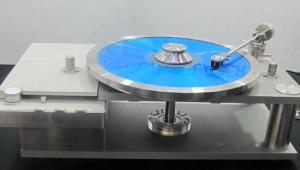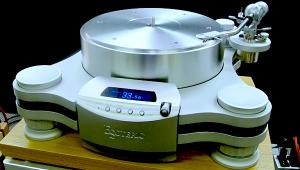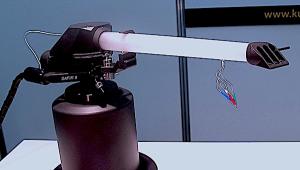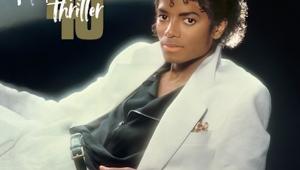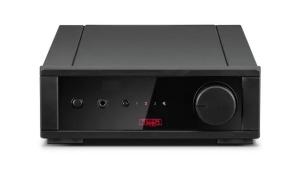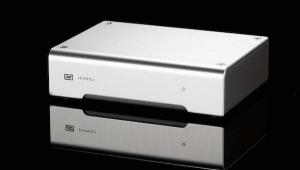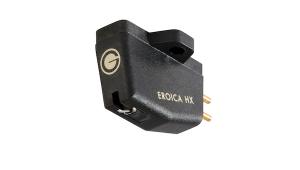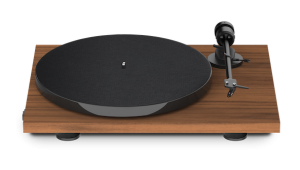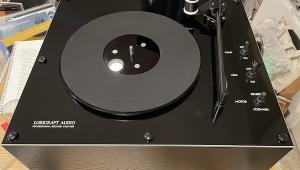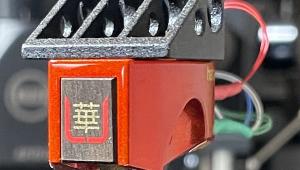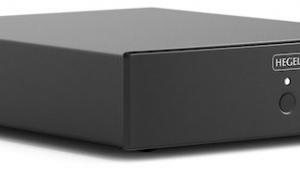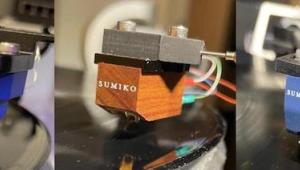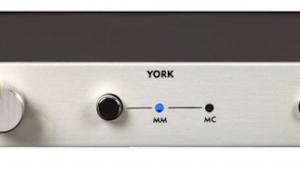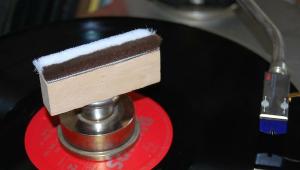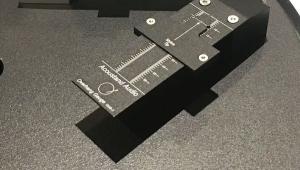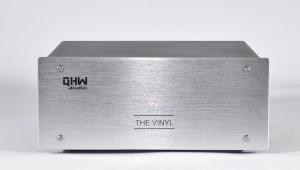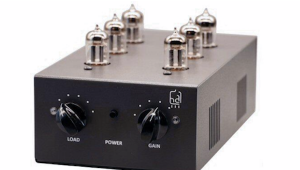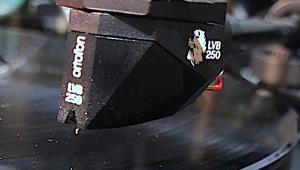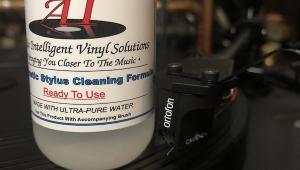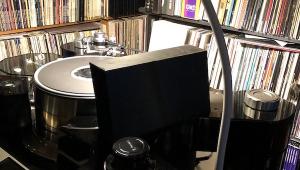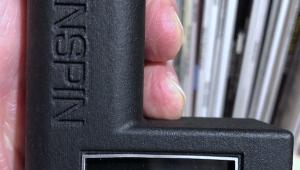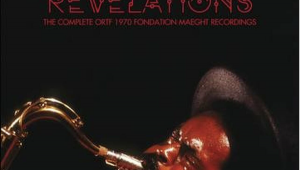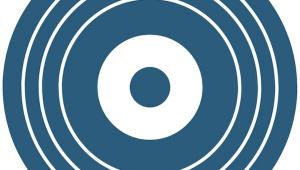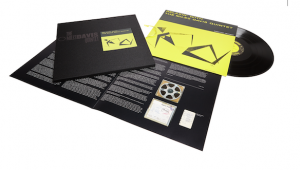Pro-Ject Produces "Carbon Copy" of Debut III That's Even Better! (CORRECTED 8/25/12)
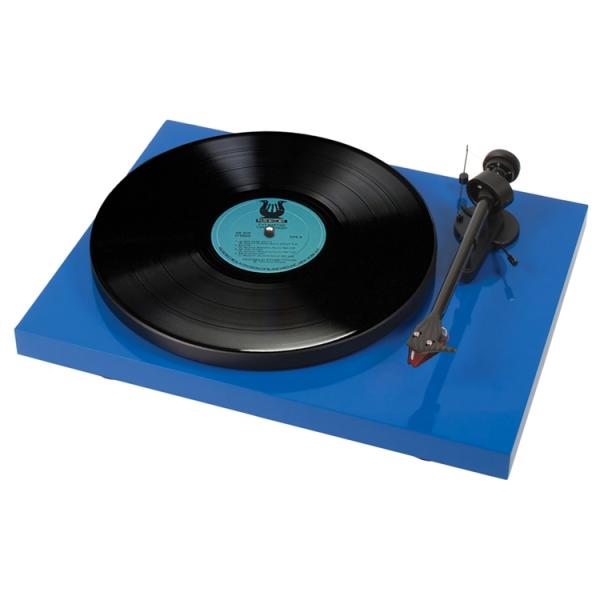
The Pro-Ject brand began as a vinyl lover's pipe dream. Vienna based audio distributor Heinz Lichtennegger believed as did many of us back in the 1990s, that vinyl was not dead. It just needed a defibrillator in the form of an inexpensive, well-made and reliable turntable.
One day Mr. Lichtennegger spotted a forlorn-looking piece of an all-black turntable sitting on a shelf somewhere or other that I can't recall. He inquired and found out it was manufactured in the Czech Republic at a Soviet-era factory that once built just about everything including refrigerators, vacuum cleaners, televisions, you name it!
The factory was mostly abandoned, but in one little corner they were still turning out this homely little turntable. Lichtennegger paid a visit and found an amazing facility that machined everything in-house including every screw, nut and bolt found in that homely little turntable.
Lichtennegger contracted with the factory to build one to his specs and fit'n'finish, that he marketed under the Pro-Ject name. It too was a fairly homely little number but it was inexpensive, worked well and sounded remarkably good. It was just what indie rock kids were looking for and could afford. From there the company just took off.
I visited the factory some years ago and took many pictures that I will try to post on this site as soon as possible so you can see what went on there then that I'm sure has been greatly enhanced since.
Twenty five years later, Pro-Ject manufactures and markets worldwide a full line of turntables (some pricey) as well as reasonably priced phono preamps, speed controller boxes and A/D and D/A converters. All direct descendants of that homely little turntable Lichtennegger spotted on a dimly lit shelf. This is a story I love!
The new $399 "plug and play" Pro-Ject Carbon replaces the old $399 Pro-Ject Debut III. Yes, the price remains essentially the same (the Debut III was $349 in black, add $30 for colors), but Pro-Ject has managed to greatly upgrade this "bread and butter" turntable beginning with the tonearm, which is now fabricated from carbon fiber from head shell to counterweight stub. The old arm was pressed from aluminum.
Other improvements include a heavier and larger diameter pressed steel platter, a new Sorbothane motor suspension system and an RCA jack termination block on the 'table so you can swap RCA cables should you choose to do so instead of the hard wired ones on the Debut III. Pro-Ject includes a set of cables that appear to of a higher quality than the formerly hard wired one. And last but especially not least is a $99 Ortofon 2M red with elliptical stylus in place of the Debut III's Ortofon OM-5. And the price includes choice of seven high-gloss colors.
Now that's what I call analog progress brought to you by ten years of solid analog growth in all sectors. More people buying turntables has allowed Pro-Ject to take advantage of the economies of scale—a concept rarely heard in high quality audio circles, particularly in the analog sector. But here we are.
Easy Set Up
Anyone, even an analog neophyte can set up this turntable thanks to clearly written instructions and a parts diagram. The Ortofon 2M red comes pre-mounted so all that's left to do is make sure the turntable is on a level surface, put the belt around the sub-platter and motor pully, mount the counterweight, follow the instructions for balancing the arm and setting the 1.75g suggested vertical tracking force and add the anti-skating weight. Plug the outboard "wall-wart" power supply into the back of the 'table and into the wall, add the RCA terminated interconnects and you're ready to spin records.
Unlike the Debut III there are no shipping screws that need to be removed from the motor mount before play. The old system suspended the A.C. synchronous motor from rubber O-rings. While it proved to be an effective isolator, it also allowed the motor to shimmy, thus changing the distance between the motor and sub platter, which had a minor effect on speed stability. The new system replaces the transport screws with thick rubber Sorbothane donuts. The result is continued effective motor isolation and less motor shimmy.
Other features include an MDF plinth sitting on four isolation feet, and a precision ground flat belt riding on a crowned two step motor pulley for 33 1/3 and 45rpm operation. You have to remove the platter to change speeds. No big deal. The arm does not allow for either VTA or azimuth adjustability so no line contact or Shibata type cartridge upgrades are recommended.
Job one for a turntable is turning at the correct speed. Using the Feickert Platter Speed iPhone app, showed the 3150Hz test tone was reprodued a bit fast at 3156.9Hz, which is pretty good. Relative speed deviation was -.011%/+0.07% while actual was -3.3Hz/+2.4Hz. These are actually decent numbers.
Sound
In the ways that analog trumps digital, I'm confident the Carbon will sonically outperform any cheap CD player, particularly in terms of musical flow and general warmth. Pair it with a Bellari tubed phono preamp and play the combo for a kid weaned on MP3s and he or she is likely to start bawling. Literally. I did that a few years ago to a friend's kid who was big into Bob Dylan and had only heard MP3s. I took out an original Blood on the Tracks and played him "Tangled Up in Blue" on another brand inexpensive turntable and when it was over he was crying. He said "I've never heard half of those instruments and each guitar strum went right through me."
Yes the Carbon shaves off the edges of every performance parameter but what's left is an unreasonably good facsimile of what really high quality vinyl playback produces: warmth, air, depth, spaciousness and musical flow that seems to escape most digital playback. Best of all, the Ortofon 2M red tracking at 1.75 grams in this tonearm will not damage your records so they will be ready for the upgrade when you are.
I'm now playing a London FFRR from 1975 recorded at famed Kingsway Hall featuring pianist Alicia de Larrocha and the Royal Philharmonic Orchestra (Concertos From Spain). The piano's pitch and intonation are quite respectable and the sense of the Kingsway Hall space is remarkably well preserved. The sense of depth and spaciousness plus the image stability is impressive.
Mostly, first timers simply won't know what they are missing and while the backdrop is reasonably quiet they won't get the jet black backdrops more expensive 'tables produce, but they will be quite aware of what they're getting: that great analog experience no amount of digital money can buy! Most highly recommended. I don't know what else comes close for $399, especially now that Pro-Ject includes the $99 Ortofon 2M red.
